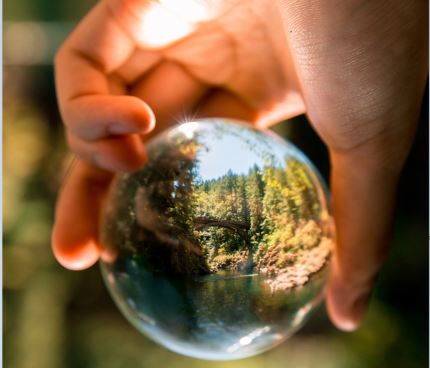The ultimate goal of the “Energiewende” (Energy Turnaround) is to drive the public debate forward all the time, not just during election campaigns. Today, most people understand just how crucial global cooperation is for tackling climate change, and the components playing a central role in meeting this challenge must be produced in a more environmentally friendly way to do just that. This applies at a micro level too, like the batteries used in photovoltaic systems to temporarily store solar-powered electricity on site.
As a leading battery company playing a central role in achieving a carbon-neutral society through its products, LG Energy Solution considers climate change a key management issue, meaning the greener production of its RESU home batteries is a must. That’s why the company has dedicated an entire department to developing and implementing measures to reduce its environmental footprint, tasked with overlooking the extraction of raw materials, the CO2 and energy balance, and the recycling and disposal of batteries at the end of their product life cycle (learn more in our annual sustainability report).
From complete material cycles to an integrated circular economy
On top of its renewable energy transition and goal of carbon neutrality, LG Energy Solution is bolstering its eco-friendly power storage production by improving how it sources raw materials and building responsible supply chains. With more than 60 percent of the greenhouse gas emissions given off during battery production coming from the production of raw materials, particularly cathodes and anodes, engagement and collaboration with suppliers is the place to start to effectively reduce greenhouse gas emissions within our value chain. Even the handling of raw materials nickel, cobalt and manganese used in our manufacturing process is carried out with extreme care, which is why our suppliers now extract raw materials using the more expensive, but more environmentally friendly dry stacking process that eliminates the need for storage ponds, dams and retention basins for polluted wastewater. What’s more, to avoid wasting rare materials, we recycle resources from expired batteries for use in new products to establish a material cycle that is as complete as possible. LG Energy Solution is working nonstop to ensure its entire value chain operates in a closed loop, from the gathering of raw materials to the production, consumption and disposal of its batteries.
Recycling drives the product life cycle of batteries
Batteries at the end of their life are already being recycled as far as possible, depending on their condition and remaining capacity. For this purpose, LG Energy Solution works closely with selected recycling companies across the globe. Both used batteries and the raw material waste generated during battery production are disassembled, dissolved and recycled so that nickel, cobalt and lithium can be reprocessed and used to produce cathodes – just one of many examples. Efficient recycling processes also lead to greater economic efficiency: the residual value of batteries can be maximized by recovering as many materials as possible. In the meantime, the development of a circular economy for batteries has itself become a new business model, which LG Energy Solution is also actively supporting through its ongoing R&D.
Carbon neutrality by 2050
Since April 2021, LG Energy Solution has been guided by the global climate initiative RE100, which, under the leadership of The Climate Group, promotes renewable energy sources with every member pledging to the exclusive use of renewable energy sources by 2050. LG Energy Solution set an example by aiming to run every global location completely on renewable energy by the end of the decade (2030). And to help us get there in time, we are introducing an environmentally friendly system that optimizes the production process which includes a closed-loop system for steam generation that reuses heat from solid waste incineration and a waste heat recovery system. We already source well over 30 percent of our electricity from renewable sources, while our Poland and U.S. production sites have already successfully transitioned to 100 percent renewable energy through a green pricing system and the purchase of renewable energy certificates (RECs). We are also steadily increasing the use of renewable energy at our Korean and Chinese sites, and by improving energy efficiency in battery production, introducing new technologies and highly efficient production facilities, and promoting carbon offset projects related to the battery business, we’re on course to achieve our biggest goal yet – becoming carbon neutral by 2050.
Picture: Image by Arthur Ogleznev from Pexels


